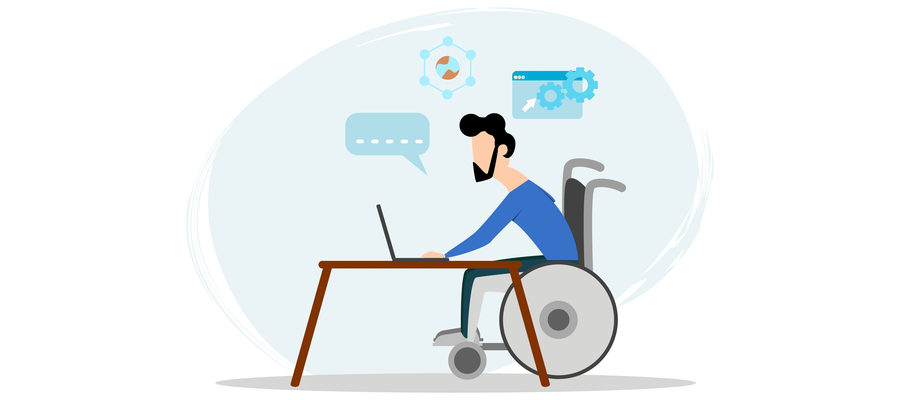For the first time, the NETendances survey, which draws up a digital profile of Quebecers each year, focused on adults with disabilities. The notion of disability used in this context included any difficulty of a hearing, visual, cognitive, physical or psychological nature as well as any other long-term health problem. Of the 12,000 Quebecers aged 18 and over interviewed for the full survey, 3,743 had at least one of these difficulties. Here are some highlights*!
*Data were collected in 2020.
Similar
95% of Quebec adults with disabilities have internet at home and use it daily, the same percentage as for the general population. A majority, 93%, also have at least one mobile device*, the same as 94% of Quebecers.
*Smartphone, laptop, tablet, smartwatch, etc.
Distinct
Half of them (49%) have at least one connected object at home, while this is the case for only 37% of all Quebec adults.
While only 40% of adults with disabilities use their smartphones to surf the Internet, this percentage rises to 47% among people with disabilities.
Barriers to browsing
27% of Quebec adults with a disability encounter difficulties when surfing the Internet. The most frequent reasons are of the following nature:
- physical (31%)
- auditory (31%)
- cognitive (31%)
- psychological (29%)
- visual (27%)
Diversity of solutions
Solutions differ according to the disability of those interviewed. In summary, increased accessibility of websites is the solution hoped for by a majority of Quebec Internet users with a hearing (46%), cognitive (42%) or physical (38%) disability; while among those with a visual disability, enlarging the fonts comes first, desired by 40% of them.
Quebec Internet users with a disability related to…
- hearing are more likely to hope for more accessible websites (46%) as well as more subtitles and access to Quebec sign language (31%).
- mobility or dexterity and those related to mental health place the most importance on captioning and access to Quebec Sign Language. For the first type of disability, 25% and for the second, 23%.
- vision would like to see larger fonts (40%) on the Internet.
- learning disabilities thought that better website accessibility (42%) and more captioning and access to Quebec Sign Language (21%) were the preferred solutions.
Source: Académie de la transformation numérique (ATN), Université Laval, Enquête NETendances 2020 – Les personnes avec incapacité et le numérique
Related articles:
- Universal Design Principles and Their Application in Education
- Collaborative learning in 3 questions
- Online training in empathic mode
- 2020 and the impact on education
- 7 principles of 21st-century learning and elearning
- Democratizing Higher Education Through Online Course Delivery
- Are You Languishing or Flowing?
- Education for the 21st Century: Test Your Knowledge!
- Does a sense of community matter in online training?
- Motivation: a driving force for learning engagement
- The importance of emotions in learning
- The adult: a distinct learner
Author:
Catherine Meilleur
Creative Content Writer @KnowledgeOne. Questioner of questions. Hyperflexible stubborn. Contemplative yogi.
Catherine Meilleur has over 15 years of experience in research and writing. Having worked as a journalist and educational designer, she is interested in everything related to learning: from educational psychology to neuroscience, and the latest innovations that can serve learners, such as virtual and augmented reality. She is also passionate about issues related to the future of education at a time when a real revolution is taking place, propelled by digital technology and artificial intelligence.







Leave A Comment